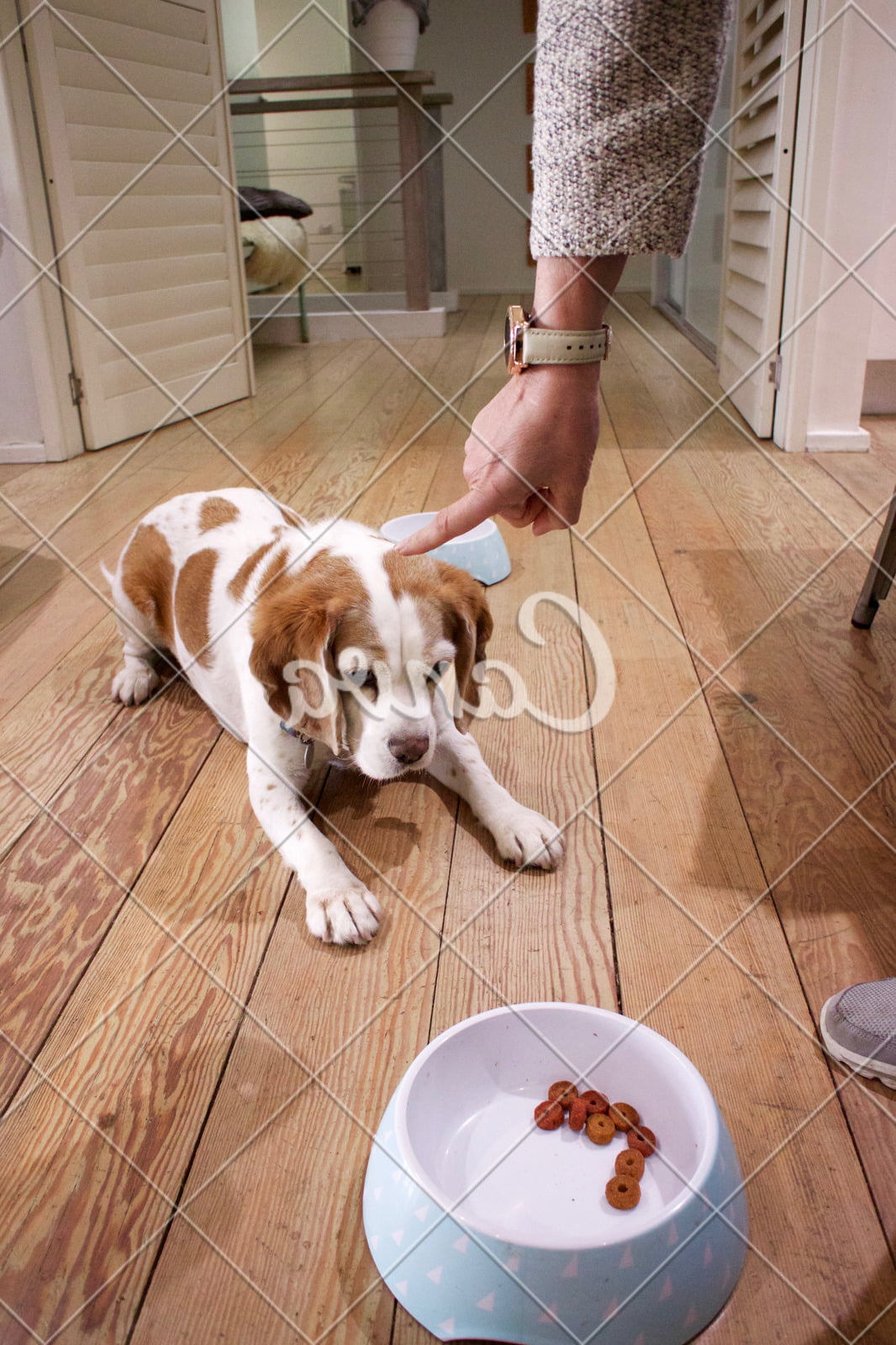What are the best training treats for dogs? The use of training treats is an essential tool in the process of training your furry friend. Whether you are teaching basic commands or working on more specific behaviors, using the right treats can make all the difference in achieving success. In this article, we will explore the importance of using training treats for dogs and delve into the various factors to consider when selecting the best treats for your canine companion.
When it comes to dog training, one of the most effective methods is positive reinforcement, which often involves the use of rewards such as treats. Training treats not only serve as a motivator for your dog but also help to create a positive association with learning new behaviors. However, not all treats are created equal, and it’s important to understand what makes certain treats more suitable for training purposes than others.
In this comprehensive guide, we will discuss different types of training treats, their nutritional value, size and texture considerations, as well as flavors and preferences that play a crucial role in effective dog training. Additionally, we will compare homemade versus store-bought treats and provide tips for effectively using treats in dog training sessions.
So, if you’re looking to enhance your canine companion’s learning experience, read on to discover how to choose the best training treats for your furry friend.
Types of Training Treats
When it comes to training dogs, using the right treats can make a significant difference in the effectiveness of the training sessions. There are various types of training treats available, and understanding their differences can help dog owners make an informed decision about which treats to use for their furry friends.
Soft and Chewy Treats
Soft and chewy treats are a popular choice for dog training due to their palatability and ease of consumption. These treats are often small in size, making them ideal for frequent rewarding during training sessions. Their soft texture also makes them easy for dogs to eat quickly, allowing for seamless training without interruptions.
Freeze-Dried or Dehydrated Treats
Freeze-dried or dehydrated treats are lightweight and have a longer shelf life compared to other types of treats. They are often made from single-ingredient proteins, making them a healthy option for dogs with specific dietary restrictions or allergies. These types of treats are convenient for carrying during outdoor training activities and can be broken into smaller pieces for portion control.
Crunchy Biscuits or Cookies
Crunchy biscuits or cookies are another option for training treats, especially for dogs who enjoy a bit of crunchiness in their rewards. These treats come in various shapes and sizes, allowing dog owners to choose options that are suitable for their pet’s preferences. However, it is essential to consider the nutritional content of these treats and opt for options that provide both taste and health benefits.
Understanding the different types of training treats available allows dog owners to select the best option based on their pet’s needs and preferences. By choosing high-quality, nutritious, and appealing treats, dog owners can effectively motivate their pets during training sessions while also promoting good health and overall well-being.
Nutritional Value
When it comes to using training treats for dogs, it’s crucial to consider their nutritional value. Just like humans, dogs need a balanced diet that provides essential nutrients to support their overall health and well-being. Therefore, choosing treats that are not only tasty but also nutritious is important for their training and overall health.
Importance of Nutritious Treats
Nutritious treats can have a positive impact on your dog’s health. When selecting training treats, it’s essential to look for options that contain high-quality ingredients such as lean meats, fruits, and vegetables. These ingredients provide the necessary nutrients, vitamins, and minerals that contribute to your dog’s overall health. Additionally, treats with added benefits such as joint support or dental care can be beneficial for maintaining your dog’s well-being.
Reading Labels
When choosing training treats for your dog, take the time to read and understand the labels. Look for treats that have real meat or protein sources listed as the first ingredient. Avoid products that contain fillers, artificial flavors, colors, or preservatives. Furthermore, consider the calorie content of the treats to ensure they align with your dog’s dietary needs and weight management goals.
Homemade Options
For pet owners who prefer more control over their dog’s diet, homemade treats can be a great option. Homemade treats allow you to select specific ingredients and tailor them to your dog’s nutritional requirements. Consider making treats using ingredients like oats, peanut butter, sweet potatoes, and carrots to create healthy and nutritious options for your furry friend.
By prioritizing the nutritional value of training treats for dogs, you can ensure that they not only enjoy their rewards during training but also benefit from the added nutrition in their diet. This approach promotes their overall well-being and contributes positively to their behavior and performance during training sessions.
Size and Texture
When it comes to training treats for dogs, the size and texture play a crucial role in their effectiveness. The right size and texture can make a significant difference in your dog’s motivation and ability to learn during training sessions. Here are some key considerations to keep in mind when selecting the best size and texture for training treats:
- Size: The size of the treat should be small enough for your dog to consume quickly, especially during rapid-fire training sessions. Small, bite-sized treats are ideal for repetitive or prolonged training exercises.
- Texture: The texture of the treat can also impact its appeal to your dog. Many trainers prefer soft, chewy treats that can be easily broken into smaller pieces if needed. Others opt for crunchy treats that provide a satisfying crunch and may be more appealing to some dogs.
In addition to considering the size and texture of the treat itself, it’s important to take into account your dog’s preferences and any dietary restrictions. Some dogs may have trouble chewing hard or crunchy treats, while others may not be as motivated by soft or chewy options. Experimenting with different sizes and textures will help you determine what works best for your individual dog.
Ultimately, the best training treats for dogs are those that are not only palatable but also easy to handle and suitable for quick consumption during training sessions. By carefully considering the size and texture of the treats you use, you can maximize their effectiveness in reinforcing positive behaviors and accelerating the learning process for your furry friend.
Flavors and Preferences
When it comes to dog training, finding the best training treats for your furry friend is essential. One important factor to consider is the flavors and preferences of different dogs. Just like humans, dogs have their own unique tastes and preferences when it comes to food. Understanding what flavors appeal to your dog can make the training process more effective and enjoyable for both you and your pet.
Best Flavors for Training Treats
- Chicken: Chicken-flavored treats are a favorite among many dogs due to their savory taste.
- Peanut butter: The rich and nutty flavor of peanut butter is a popular choice for training treats.
- Cheese: Many dogs are drawn to the strong aroma and delicious taste of cheese-flavored treats.
Preferences for Different Dogs
Understanding the specific preferences of your dog can help you choose the best training treats. Some dogs may prefer soft and chewy treats, while others may favor crunchy or hard textures. Paying attention to your dog’s reactions during training sessions can help you determine which flavors and textures they respond to best.
Consider Your Dog’s Health Needs
It’s important to consider any dietary restrictions or health issues when selecting training treats for your dog. For example, if your dog has allergies or sensitivities to certain ingredients, you’ll want to avoid treats that contain those ingredients. Additionally, if your dog is overweight or on a special diet, you’ll want to choose low-calorie or healthy ingredient-based treats.
By taking into account the flavors and preferences of different dogs, as well as their individual health needs, you can ensure that you are using the best training treats for successful and enjoyable training sessions with your canine companion.
Homemade vs Store-Bought Treats
When it comes to choosing the best training treats for dogs, one of the decisions that dog owners often face is whether to opt for homemade treats or store-bought options. Each has its own set of benefits and drawbacks to consider.
Homemade treats have the advantage of being customizable, allowing owners to tailor the ingredients to their dog’s specific dietary needs. Additionally, making treats at home provides greater control over the quality of ingredients used, ensuring that they are free from artificial additives or preservatives.
This can be particularly beneficial for dogs with food sensitivities or allergies. Another benefit of homemade treats is that they can be cost-effective in the long run, especially if made in larger batches and frozen for later use.
On the other hand, store-bought training treats offer convenience and variety. They are readily available in pet stores and online, providing a quick and easy option for owners who may not have the time to make treats from scratch.
Store-bought treats also come in a wide range of flavors, textures, and sizes, catering to different preferences and training needs. However, some store-bought treats may contain fillers or low-quality ingredients that do not provide optimal nutrition for dogs.
Ultimately, both homemade and store-bought training treats can be suitable options depending on the individual needs and preferences of the dog and their owner. It’s essential to carefully consider factors such as nutritional value, ingredient quality, cost, and convenience when deciding which type of treat is best for your furry friend. Consulting with a veterinarian or professional trainer can also provide valuable insight into what are truly the best training treats for dogs.
Training Treat Tips
When it comes to using training treats for dogs, it’s important to understand the best practices for effectively incorporating them into training sessions. Whether you’re working on basic obedience, agility, or behavior modification, choosing the right treats and using them in the right way can make a significant difference in your dog’s progress. Here are some essential tips for effectively using treats in dog training.
Firstly, it’s crucial to select the appropriate size and texture of treats for training. Treats should be small enough for your dog to consume quickly, especially during fast-paced training sessions. Additionally, consider the texture of the treats – they should be easy for your dog to chew and swallow without any issues. This is particularly important when working on commands or behaviors that require rapid reinforcement.
In addition to size and texture, consider the nutritional value of the treats you use. Opt for high-quality, nutritious treats that not only serve as a reward but also contribute to your dog’s overall health. Look for treats made with wholesome ingredients and free from artificial additives or fillers. This ensures that your dog is being rewarded with something beneficial, rather than empty calories.
Finally, it’s essential to pay attention to your dog’s individual preferences when selecting training treats. Some dogs may have specific flavor preferences, so it’s important to experiment with different options to identify what motivates your canine companion the most. By catering to their tastes, you can make the training experience more enjoyable and rewarding for them.
| Tips | Importance |
|---|---|
| Select appropriate size and texture | Quick consumption and easy swallowing |
| Consider nutritional value | Contribute to overall health |
| Paying attention to individual preferences | Makes training more enjoyable |
Best Training Treats for Specific Behaviors
When it comes to training dogs, using the right treats can make a significant difference in the success of your efforts. Whether you are working on obedience, agility, or behavior modification, choosing the best training treats for specific behaviors is crucial. Different types of treats may be more effective depending on the particular training goal you are aiming to achieve.
For obedience training, where you want your dog to follow commands and respond to cues, small, soft treats that can be quickly consumed are ideal. This allows for rapid reinforcement of good behavior without interrupting the flow of training. Treats such as diced chicken, cheese cubes, or small pieces of cooked meat are often recommended for obedience training.
In the case of agility training, where dogs need to be quick and nimble while navigating obstacles and following commands, high-value treats that provide an extra incentive may be more suitable. Treats such as freeze-dried liver or other favorite foods that your dog goes crazy for can be highly effective in motivating them to perform at their best during agility exercises.
Behavior modification training often requires a strategic approach to address specific issues such as fear, anxiety, or reactivity. For this type of training, it’s essential to select treats that not only motivate but also have a calming effect. Treats with added ingredients like chamomile or lavender known for their calming properties can be beneficial in such cases.
When looking at the effectiveness of different treats for various behaviors, it’s important to consider factors such as taste preferences and nutritional value. Understanding what motivates your dog and aligning it with nutritious options will ultimately contribute to successful training outcomes.
| Training Goal | Recommended Treats |
|---|---|
| Obedience | Diced chicken, cheese cubes |
| Agility | Freeze-dried liver or favorite food |
| Behavior Modification | Treats with calming ingredients (chamomile or lavender) |
Conclusion
In conclusion, it is essential to understand the significance of using the best training treats for dogs. The right treats can be a powerful tool in effectively training and rewarding our furry companions. When considering what are the best training treats for dogs, it is important to take into account various factors such as nutritional value, size and texture, flavors and preferences, as well as whether to opt for homemade or store-bought options.
By choosing high-quality training treats that are nutritious and appealing to our dogs, we can ensure that they are not only receiving positive reinforcement but also benefiting from the added nutrition. Additionally, considering the size and texture of the treats is crucial in keeping our dogs engaged and motivated during training sessions. Understanding their flavor preferences will further enhance the effectiveness of using treats as rewards during training.
In evaluating whether to opt for homemade or store-bought training treats, it is important to carefully consider the specific needs and preferences of our dogs. While homemade treats allow for more control over ingredients and can be more cost-effective, store-bought options often offer convenience and a wide variety of choices. By taking all these factors into consideration, we can make informed decisions when selecting the best training treats for our dogs, ultimately leading to successful training outcomes.
Frequently Asked Questions
What Is the Best Treat for Training Dogs?
The best treat for training dogs is one that is highly appealing to them and easily consumable. Treats should be small and tasty, so they can be quickly eaten and the training can continue without interruption.
What Treats Are Best for Training Reactive Dogs?
When it comes to training reactive dogs, it’s important to choose treats that are not only highly palatable but also have a strong aroma to capture the dog’s attention in distracting situations. Soft, chewy treats or freeze-dried meats tend to work well for reactive dogs.
How Do I Choose Dog Training Treats?
When choosing dog training treats, consider your dog’s preferences, dietary restrictions, and the specific behaviors you’re trying to reinforce. Look for treats that are low in calories but high in flavor, as well as easy to break into small pieces for frequent rewards during training sessions.
Selecting treats with limited ingredients can also be beneficial for dogs with food sensitivities.

Welcome to the blog! I am a professional dog trainer and have been working with dogs for many years. In this blog, I will be discussing various topics related to dog training, including tips, tricks, and advice. I hope you find this information helpful and informative. Thanks for reading!





